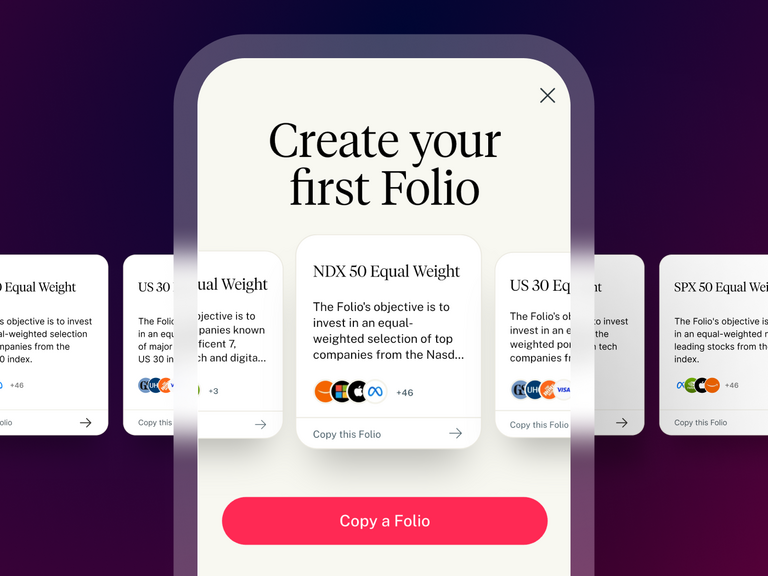Technology companies were hit by unfavourable macroeconomic conditions through 2022 and at the start of 2023, but certain SaaS firms have bucked the trend. Crossovers with sub-themes such as AI and cybersecurity, as well as surprisingly low levels of penetration, mean analysts believe the sector will continue to expand in the coming years.
- CRM software is the top SaaS category according to data from Vendr.
- Splunk says that 50% of security teams focus on cloud threats.
- SPDR S&P Software & Services ETF climbs 20% year to date.
Software-as-a-service (SaaS) is a subdivision of cloud computing. It enables software vendors to contract a third-party cloud provider to host their software in the cloud, via its own servers, databases and networks.
SaaS typically refers to the software companies building cloud-based apps, rather than cloud providers, which overlap with cloud computing’s other sub-themes: infrastructure-as-a-service (IaaS) and platform-as-a-service (PaaS).
Most SaaS companies operate as a subscription service, charging their customers a regular fee for a software account. As such, monthly recurring revenue (MRR) and annual recurring revenue (ARR) are two key metrics for companies in the SaaS space. HubSpot [HUBS], for example, celebrated hitting $2bn in ARR in early May 2023.
According to SaaS buying platform Vendr, its most-purchased category within the SaaS market in the first quarter of 2023 was customer relationship management (CRM) software. Salesforce [CRM] was the clear leader within this category, taking 69.4% of transactions through Vendr during the period. A rising contender, HubSpot is in second place, with 23.1% of sales.
The other categories that topped Vendr’s list were cybersecurity, project management and application performance monitoring. Asana [ASAN] was the leader in project management, and while Splunk [SPLK] was only the third most-purchased provider of application performance monitoring software, its overlap with cybersecurity makes it an interesting example of the ways in which SaaS companies can exploit synergies across different sub-themes.
In February 2023, research from The Insight Partners valued 2022’s global SaaS market at $167.53bn and predicted it would grow to $462.94bn by 2028, at a CAGR of 18.5%.
The rise of cloud crossovers
The near-term future of SaaS is “unsurprisingly” going to be shaped by the emergence of artificial intelligence (AI), according to David Hornik, founding partner of venture capital fund Lobby Capital.
“We are going to see a lot of new platforms emerge that combine good old-fashioned SaaS use cases with the latest and greatest in AI,” he told Opto.
Asana is helping drive this crossover, having recently integrated AI into its collaborative work management processes. Asana Intelligence, launched on 1 June 2023, integrates AI into Asana’s cloud-based platform in order to accelerate decision-making and optimise workflows. It includes a writing assistant, as well as instant transcriptions and meeting summaries.
There are other crossovers with SaaS, however, with data analytics being one obvious example. Hornik explained how he first came across the concept of big data ahead of his investment into Splunk.
Back then, “there was no such thing as ‘big data’. But three amazing founders came to me and said ‘wouldn’t it be amazing if you could build a search engine on top of log files?’ And the answer was ‘yes.’”
Underscoring the potential for cross-pollination between SaaS and other technology sub-themes, Splunk also offers security services, with the real-time disparate data analytical capabilities of its software being a useful feature in tackling cybersecurity threats. There is a sense in which SaaS businesses are self-generating. Splunk’s State of Security 2023 report noted that 50% of its survey respondents said their security operations centre staff are predominantly focused on addressing issues in the public cloud, with just 13% primarily engaged on-premises.
SaaS resilient in the face of adversity
Technology revenue growth slowed in 2022, with inflation and high interest rates weighing on performance. However, some key players within SaaS were able to buck the trend.
Asana, for example, posted an earnings and revenue beat for Q1 2024, growing its revenue 26% year-over-year. Salesforce saw revenues rise 11% year-over-year to $8.25bn during the same period; non-GAAP EPS grew 72.45% from $0.98 in 2023 to $1.69 in 2024. Splunk’s ARR climbed 16% year-over-year, with cloud revenue in particular soaring 30%. HubSpot grew revenue 27% year-over-year for Q1 2023 and posted non-GAAP earnings of $1.20 per diluted share, up 122% from $0.54 in Q1 2022.
Results like these underscore “the power of the as-a-service and recurring business model”, according to Mayuranki De, research analyst at Global X.
The macroeconomic conditions of 2022 and the first half of 2023 were a headwind for technology businesses, and SaaS was no exception. Salesforce announced plans to cut 10% of staff in March 2023, its first reduction since going public in 2004.
However, De points out that SaaS subscriptions have displayed resilience, “surpassing revenue estimates” despite the global IT slowdown.
Room to run
It might feel ubiquitous, but SaaS is still a surprisingly immature industry.
“While big tech companies experienced a noticeable and anticipated slowdown in their cloud franchises [in Q1 2023]… we firmly believe that the cloud computing market is far from reaching saturation,” De told Opto.
According to Anthony Ginsberg, founder and CEO of GinsGlobal Index Funds, “only 25% of corporate workloads are in the public cloud”, indicating that there is still “huge upside” in the theme. De echoes this perspective, observing that “while approximately 85% of global IT spending remains outside of the cloud, eventually all software and data assets will transition online”.
Ginsberg also highlights the tailwinds that the theme benefits from, even during times of macroeconomic slowdown. These include “ongoing cost savings and [the] work-from-home trend, boosting use during recessionary times”.
AI to drive increased demand
Elaborating on the impact of technological innovations on SaaS growth, Hornik told Opto: “In the time that I have been investing in SaaS businesses, we’ve seen them be transformed by social connectedness and big data. Next up is AI.” Hornik is not the only person championing AI’s influence over the future of SaaS.
De points out that “emerging paradigms like AI are already starting to shape the field’s potential”. As well as SaaS, AI is influencing the IaaS market: “Hyperscale processing facilities will play a critical role in facilitating the training and operation of AI systems at scale… As a result, there will be an increased demand not only for cloud infrastructure-as-a-service but also for specialised platforms.”
This has led, for example, to a tenfold increase in subscriptions to Microsoft’s [MSFT] Azure OpenAI Service.
Funds in focus
Several ETFs offer investors exposure to the SaaS theme. The Invesco Dynamic Software ETF [PSJ] tracks the Dynamic Software Intellidex Index, an index of 30 US software companies including HubSpot, which has a 5.2% weighting. As of 5 June 2023, 66.8% of holdings are in the information technology (IT) sector, 28% communication services, 2.6% financials and 2.4% healthcare.
The ARKK Innovation ETF [ARKK], the flagship fund of Cathie Wood’s Ark Invest, holds stocks across the field of ‘disruptive innovation’, including SaaS. Zoom Video Communications [ZM] is a long-time incumbent of ARKK’s top 10 holdings, with a 7.38% weighting as of 7 June. ARKK’s holdings are predominantly large- and medium-cap stocks, reflecting an emphasis on growth potential.
Finally, the SPDR S&P Software & Services ETF [XSW] tracks the S&P Software & Services Select Industry Index, which itself benchmarks the software and services segment of the S&P Total Market Index. Its holdings are weighted 69.3% towards application software companies, 18.4% systems software, 6.4% IT consulting firms, 3.3% interactive home entertainment, and 2.5% in human resources and employment services. Holdings as of 6 June include HubSpot, Splunk, Asana and Salesforce. The fund is up 20.1% year-to-date.
Disclaimer Past performance is not a reliable indicator of future results.
CMC Markets is an execution-only service provider. The material (whether or not it states any opinions) is for general information purposes only, and does not take into account your personal circumstances or objectives. Nothing in this material is (or should be considered to be) financial, investment or other advice on which reliance should be placed. No opinion given in the material constitutes a recommendation by CMC Markets or the author that any particular investment, security, transaction or investment strategy is suitable for any specific person.
The material has not been prepared in accordance with legal requirements designed to promote the independence of investment research. Although we are not specifically prevented from dealing before providing this material, we do not seek to take advantage of the material prior to its dissemination.
CMC Markets does not endorse or offer opinion on the trading strategies used by the author. Their trading strategies do not guarantee any return and CMC Markets shall not be held responsible for any loss that you may incur, either directly or indirectly, arising from any investment based on any information contained herein.
*Tax treatment depends on individual circumstances and can change or may differ in a jurisdiction other than the UK.
Continue reading for FREE
- Includes free newsletter updates, unsubscribe anytime. Privacy policy





